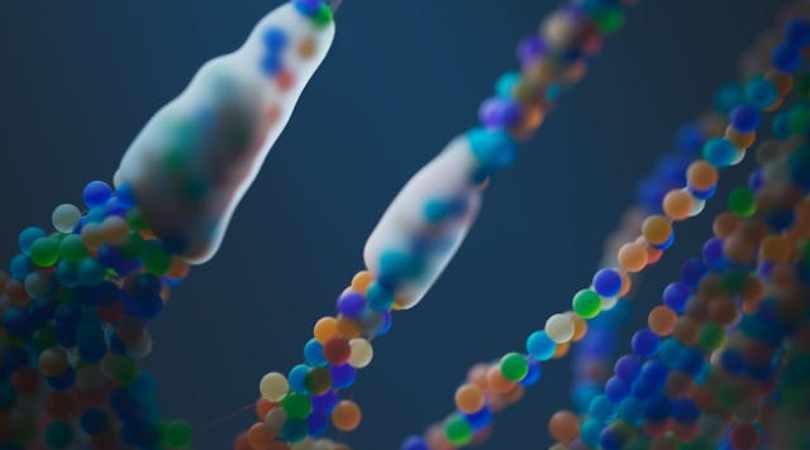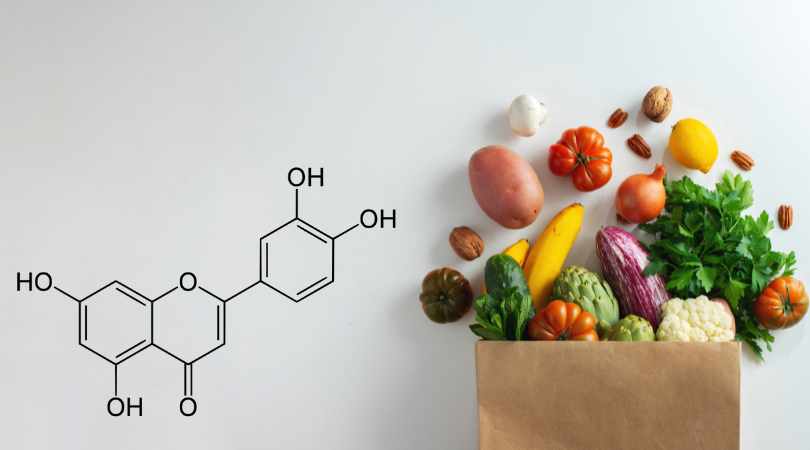Scientists have successfully restored the lost uricase enzyme, a key breakthrough in combating fructose-induced fat formation. This discovery offers new hope for preventing obesity and metabolic disorders by targeting how the body processes sugar and stores fat.
Limited Quantities Available! Order Today and Enjoy Free Shipping on Orders Over $100!
Uric Acid
A byproduct of fructose metabolism linked to inflammation, gout, insulin resistance, and mitochondrial stress.
Lower What Lingers After Fructose
Uric acid isn’t just a byproduct—it’s a signal that your metabolism is under stress.
Fructose metabolism creates uric acid as a downstream effect. And when uric acid levels rise, it doesn’t just lead to gout – it impairs nitric oxide, slows blood flow, and puts pressure on your mitochondria. Even if you don’t eat sugar, internal fructose production can keep uric acid elevated. Uric acid is not just a byproduct of metabolic dysfunction — it is its driver.
SugarShield is designed to support your body’s uric acid balance naturally. With tart cherry extract and luteolin, it helps reduce the impact of fructose metabolism, protecting energy output and promoting healthier inflammation responses.
What is Uric Acid?
Uric acid is a waste product of fructose metabolism that forms when the body breaks down substances called purines – a group of small biological molecules that are critical in cell metabolic functioning (Tang, et al., 2019). They can be found both endogeneously (produced by the body) and exogenously (coming outside the body from certain foods like red meat or seafood, and alcohol). The most common examples of purines are adenine (building block of DNA and RNA) and adenosine phosphate molecules (ATP (cell energy), ADP (energy transfer) and AMP (cell signalling)). The highest contribution to uric acid production comes from endogenous purines.
When exploring mechanisms of uric acid production, fructose contribution is usually overshadowed. Despite strong mechanistic and clinical evidence, fructose is not always emphasized as a primary contributor. However, a key reason this simple sugar is increasingly implicated in metabolic diseases lies within its contribution to de novo purines synthesis and, therefore, elevated levels and accumulation of uric acid (Zhang, et al., 2022).
Under normal conditions, uric acid is filtered through the kidneys and excreted in urine. But overproduction and excretion failure can cause uric acid crystals formation as excessive amounts accumulate crystallises in joints or kidneys causing gout. However, while long associated with gout, uric acid is now recognized as playing a broader role in metabolic dysfunction. The accumulation of uric acid in the blood leads to a condition called hyperuricemia, causing cellular energy disruption, insulin resistance, risk of cardiovascular diseases and fat accumulation through mechanisms involving mitochondrial stress and enzyme inhibition (Zhang, et al., 2019; Yip, et al., 2020).
According to the NHS, the normal range of uric acid is:
- Age under 16: 170 - 240 umol/L
- Adult female: 170 - 420 umol/L
- Adult male: 230 - 480 umol/L
The results outside the range doesn’t necessarily indicate a disease, the same as the result within the range does not exclude abnormality.
Liv3 Health is aiming to explore and address the importance of fructose role in the production of uric acid and educate about possible downstream effects of hyperuricemia in order to promote healthier dietary choices through SugarShield.
How Fructose Increases Uric Acid
Fructose triggers uric acid production in a unique and problematic way. The mechanism begins with unregulated phosphorylation of fructose molecules by enzyme fructokinase: trapping fructose inside the cell and converting it into fructose-1-phosphate, depleting ATP in the process. Unlike glucose metabolism, this process bypasses normal glycolytic control. As ATP is consumed, it generates purine AMP (adenosine monophosphate) - that is eventually degraded into uric acid. This pathway is unique to fructose, as other carbohydrates such as glucose do not trigger the same rapid ATP depletion and uric acid production. This means even a modest amount of fructose – especially from high fructose corn syrup or sugary drinks – can cause a sharp spike in uric acid production.
Moreover, endogenous fructose – when your body generates fructose internally from glucose and triggered by stress, high glucose or salt intake, or dehydration – as well keeps uric acid levels elevated. That means its effects can be felt even on a low-sugar or sugar-free diet (Bjornstad, et al., 2015). Diabetic people are most susceptible to experience this as studies suggest that diabetes is associated with endogenous fructose synthesis by activating polyol pathway – converting glucose to sorbitol (carbohydrate derived from sugars also known as polyol), which is then converted to fructose (Lanaspa et al., 2014).
Why High Uric Acid is a Problem
The most known effect of elevated uric acid levels is gout. Unfiltered uric acid remains in kidneys and crystals depose in joints, causing inflammation and chronic damage to both cartilage and bone tissue. Gout leads to tophi and bone loss, especially in the affected joints (Ghaemi-Oskouie and Shi, 2011).
However, elevated uric acid is more than a gout trigger. Hyperuricemia is a problem that goes beyond gout. Elevated uric acid is now recognised as a powerful contributor to metabolic dysfunctions. Studies indicate that hyperuricemia has a direct vascular effect (Corry et al., 2008; Yip et al., 2020). It overactivates the local vascular renin‑angiotensin system (RAS) – a system of hormones and enzymes that regulates blood pressure, inflammation and vascular tone – resulting in:
- pro-inflammation and oxidative stress, damaging mitochondria and impairing energy production leading to atherosclerosis and insulin resistance (fatty liver and systemic inflammation);
- cardiovascular diseases due to vascular remodeling and stiffness that causes arterial thickening and loss of elasticity;
- Renal Arteriopathy – narrowing of renal arteries – impairs kidney function over time, reducing the body’s ability to eliminate waste and maintain homeostasis.
- Reduces nitric oxide, impairing blood vessel function and increasing blood pressure.
It is even more dangerous that hyperuricemia might appear asymptomatic. The diagnosis is often incidentally discovered with blood tests. While a lot of people consider it “harmless”, modern researchers have found evidence for its silent contributor to metabolic dysfunction.
SugarShield aims to address harmful activity of uric acid by blocking fructose’s metabolic pathway, allowing your body to maintain healthier energy production and improve overall metabolic health.
Uric Acid and Metabolic Syndrome
High uric acid levels are commonly found in individuals with metabolic syndrome – a cluster of conditions including high blood pressure, insulin resistance, abdominal obesity, and elevated triglycerides (Rossi et al., 2022). The universal causes of metabolic syndrome are chronic inflammation, oxidative stress and energy dysfunction. Some researchers now propose that uric acid itself is causal – damaging mitochondria, promoting fat storage, and impairing glucose regulation (Copur, et al., 2022).
All the variables are linked between each other: high fructose intake (in high fructose corn syrup/endogenous fructose/processed food) - fructokinase starts fructose metabolism - elevated production of uric acid - inflammation, oxidative stress - impaired mitochondrial function - metabolic syndrome. This perspective positions uric acid as a critical biomarker and possible therapeutic target in metabolic disease, especially when driven by high fructose intake or hidden internal triggers like the polyol pathway.
Natural Ways to Support Uric Acid Balance
Emerging research supports the use of natural compounds like tart cherry extract that is rich in anthocyanins, which has been shown in clinical studies to reduce uric acid levels and inflammation. In parallel, luteolin – a plant flavonoid – has demonstrated promise in preclinical models for reducing the activity of fructokinase, the enzyme that initiates fructose metabolism and uric acid production (Yao et al., 2023).
The mechanism underlying SugarShield fructose control is liposomal delivery of luteolin and tart cherry extract in order to restore your energy and improve metabolic health. Together, these ingredients represent a nutritional strategy to manage uric acid from both ends: reducing production and improving clearance – especially when addressing the metabolic burden of fructose.
Therefore, uric acid can be considered as one of the major modern metabolic dysfunction drivers. In Liv3Health we believe that educating people on potential causes of elevated levels of uric acid coming from excessive fructose consumption may contribute to better health and improved lifestyle. Understanding and managing uric acid is essential not just for avoiding gout, but for reclaiming metabolic health.
These statements have not been evaluated by the FDA. This product is not intended to diagnose, treat, cure, or prevent any disease.
Acknowledgment: Content developed with contributions from Kristina Kaktus, student studying BSc Global Health & Social Medicine at King’s College London, as part of the LIV3 Health Science Internship Program.
References
- Bjornstad, P., Lanaspa, M. A., Ishimoto, T., Kosugi, T., Kume, S., Jalal, D., Maahs, D. M., Snell-Bergeon, J. K., Johnson, R. J., & Nakagawa, T. (2015). Fructose and uric acid in diabetic nephropathy. Diabetologia, 58(9), 1993–2002. https://doi.org/10.1007/s00125-015-3650-4
- Chenhao Yao , Shu Dai , Cheng Wang , Ke Fu , Rui Wu , Xingtao Zhao , Yuxin Yao , Yunxia Li. (2023). Luteolin as a potential hepatoprotective drug: Molecular mechanisms and treatment strategies. Biomedicine & Pharmacotherapy, 167(115464). https://doi.org/10.1016/j.biopha.2023.115464
- Copur, S., Demiray, A., & Kanbay, M. (2022). Uric acid in metabolic syndrome: Does uric acid have a definitive role? European journal of internal medicine, 103, 4-12. https://doi.org/10.1016/j.ejim.2022.04.022
- Corry, Dalila; Eslami, Piroozb; Yamamoto, Keib; Nyby, Michael; Makino, Hirofumi; Tuck, Michael. (2008). Uric acid stimulates vascular smooth muscle cell proliferation and oxidative stress via the vascular renin–angiotensin system. Journal of Hypertension, 26(2), 269-275. DOI: 10.1097/HJH.0b013e3282f240bf
- Ghaemi-Oskouie, F., & Shi, Y. (2011). The role of uric acid as an endogenous danger signal in immunity and inflammation. Current rheumatology reports, 13(2), 160-166. https://doi.org/10.1007/s11926-011-0162-1
- João Leonardo Silveira Rossi, Sandra Maria Barbalho, Renan Reverete de Araujo, Marcelo Dib Bechara, Kátia Portero Sloan, Lance Alan Sloan. (2022). Metabolic syndrome and cardiovascular diseases: Going beyond traditional risk factors. Diabetes metabolism research and reviews, 38(3). https://doi.org/10.1002/dmrr.3502
- Lanaspa, M. A., Ishimoto, T., Cicerchi, C., Tamura, Y., Roncal-Jimenez, C. A., Chen, W., Tanabe, K., Andres-Hernando, A., Orlicky, D. J., Finol, E., Inaba, S., Li, N., Rivard, C. J.,, & Kosugi, T., Sanchez-Lozada, L. G., Petrash, J. M., Sautin, Y. Y., Ejaz, A. A., Kitagawa, W., Garcia, G. E., … Johnson, R. J. (2014). Endogenous fructose production and fructokinase activation mediate renal injury in diabetic nephropathy. Journal of the American Society of Nephrology : JASN, 25(11), 2526–2538. https://doi.org/10.1681/ASN.2013080901
- Tang, Z., Ye, W., Chen, H., Kuang, X., Guo, J., Xiang, M., Peng, C., Chen, X., & Liu, H. (2019). Role of purines in regulation of metabolic reprogramming. Purinergic signalling, 15(4), 423-438. https://doi.org/10.1007/s11302-019-09676-z
- Yip, K., Cohen, R. E., & Pillinger, M. H. (2020). Asymptomatic hyperuricemia: is it really asymptomatic? Current opinion in rheumatology, 32(1), 71-79. https://doi.org/10.1097/BOR.0000000000000679
- Zhang, P., Sun, H., Cheng, X., Li, Y., Zhao, Y., Mei, W., Wei, X., Zhou, H., Du, Y., & Zeng, C. (2022). Dietary intake of fructose increases purine de novo synthesis: A crucial mechanism for hyperuricemia. Frontiers in nutrition, 9(1045805). https://doi.org/10.3389/fnut.2022.1045805
- Zhang, S., Wang, Y., Cheng, J., Huangfu, N., Zhao, R., Xu, Z., Zhang, F., Zheng, W., & Zhang, D. (2019). Hyperuricemia and Cardiovascular Disease. Current pharmaceutical design, 25(6), 700-709. https://doi.org/10.2174/1381612825666190408122557







